Core samples
Type of resources
Topics
Keywords
Contact for the resource
Provided by
Years
Formats
Representation types
Update frequencies
Scale
-

Cell count data from the Chicxulub crater. Grant abstract: The deep subsurface is recognised to be an environment that supports a large and diverse microbial biosphere, and yet we still know very little about how microorganisms grow in this environment, what their spatial diversity is and how this diversity is controlled by subsurface geochemical conditions. Previous research has primarily focused on deep-ocean sediments. Work in these environments has shown that geochemical interfaces are important for determining the diversity of the subsurface biosphere. Little is known about how the subsurface biosphere in marine environments compares to that in continental subsurface environments. Our laboratory will acquire core samples collected from the peak ring of the 66 million-year old Chicxulub impact structure buried beneath the Gulf of Mexico in April-May 2016 during IODP Expedition 364. This end-Cretaceous impact structure is hypothesised to have been responsible for causing the extinction of the dinosaurs and ~75% of all other life at this time. The drill core will be retrieved with microbiological contamination control to ~1.5 km depth. Thus, the drill core offers the opportunity to investigate the subsurface microbiology of a continental site and also how the microbial diversity relates to a unique, but well-defined subsurface lithologic sequence. In this project we propose to use these cores to gain new insights into the diversity of microorganisms in the subsurface. In this project we will: 1) Quantify the biomass of microorganisms through the core and correlate it to the lithologies to understand how microbial life in the continental deep subsurface is influenced by lithology, 2) Specifically investigate how microbial abundance and diversity is correlated to impact lithologies to understand how impacts can disrupt the deep subsurface biosphere, 3) Culture and use '-omics' methods such as metagenomics to understand how the functional capabilities and metabolisms of organisms correlate to the environment and lithology through the core to gain a better understanding of microbial biogeochemical processes in the deep subsurface in general and specifically in an impact crater, 4) Use the above data to understand more generally how life recolonises impact craters and how craters might provide a habitat for life despite otherwise catastrophic effects on large surface dwelling life.
-
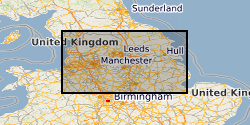
The dataset is a subset of the BGS borehole material database, created on August 1st 2015 covering only the Bowland-Hodder geological unit (as defined and mapped by Andrews et al., 2013). It shows all boreholes (name, location and registration details) for which BGS hold borehole material (drillcore, cuttings, samples and their depth ranges). This data will add value to existing NERC (Natural Environment Research Council) data by allowing a simple route for users to identify borehole material from the Bowland-Hodder interval.
-
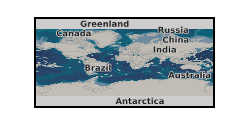
Core description, core samples and thin sections of Lower Carboniferous dolomite. Thesis : Reservoir Properties of Lower Carboniferous Limestone of the Derbyshire East Midlands Platform by Jack Stacey. Thesis: Advances in understanding the evolution of diagenesis in carboniferous carbonate platforms: insights from simulations of palaeohydrology, geochemistry, and stratigraphic development by Miles Frazer
-
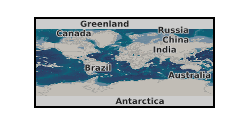
IDA267644 Methane and CO2 gas concentrations and stable isotope analyses of select core samples from GGC01 borehole of the Glasgow UKGEOS facility. Core samples were collected approximately every 10m depth in gas tight isojars by the BGS. Geochemical gas analyses was carried out at the Scottish Universities Environmental Research Centre (SUERC) and consisted of bulk concentration analysis using gas chromatography; followed by δ13CCH4, δ13CCO2, and δD stable isotope analyses on a methane combustion line (full methods attached). This data was collected to investigate the variability of gas fingerprints with depth within the Glasgow coal mine workings, and unmined Carboniferous coal measures. Samples and data are derived from the UK Geoenergy Observatories Programme funded by the UKRI Natural Environment Research Council and delivered by the British Geological Survey.
-
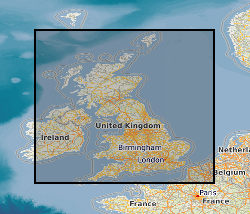
Index to borehole material held chiefly as continuous drillcore, bulk samples, unwashed cuttings and processed material from onshore UK.
-

Soil depth core collected from the Needle’s Eye site in Dumfries, Scotland. Clear plastic depth core was lowered into a bog within the site, excised, and capped at the top and bottom. Core was sliced at 1 cm intervals at the University of Manchester in an anaerobic bag. A total of 42 samples were generated. Soil samples were returned to Newcastle University.
-
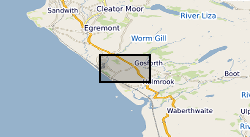
During the period from 1989 to 1997, Nirex undertook extensive geological investigations at sites near Sellafield, in Cumbria, and Dounreay, in Caithness, to examine whether or not they were suitable locations for a deep repository for radioactive waste. At Sellafield, thirty deep boreholes, and a further thirty-five shallow boreholes, were drilled. The majority of the deep boreholes were drilled to obtain continuous core and some 18.7km of rock core arose from the investigations. Two deep boreholes were drilled at Dounreay, totalling 2,286 metres of drilling. Again, much of the drilling was to obtain continuous core. In most of the boreholes a suite of data acquisition techniques were used, including: continuous coring, geophysical wireline logging, hydraulic testing, sampling and analysis of groundwaters. Mineralogical data were acquired by detailed core observation, petrographic analysis, fluid inclusion analysis and stable and radiogenic isotope studies. Testing on samples from the rock cores was undertaken to determine petrological, mineralogical, hydrogeological, geophysical and geotechnical parameters. The ownership of NIREX (Nuclear Industry Radioactive Waste Executive) was transferred from the nuclear industry to the UK Government departments DEFRA and DTI in April 2005, and then to the UK's Nuclear Decommissioning Authority (NDA) in November 2006.
-

Two sediment depth cores were collected from the River Esk estuary during low tide near the town of Ravenglass, UK. Cores were collected by the University of Manchester. Cores were sliced at 1 cm intervals from 0 - 10 cm, and at 2 cm intervals thereafter. Slicing was performed in an anaerobic bag. Samples were transferred to Newcastle University for DNA extraction. A total of 19 samples were extracted for core 1, and 18 samples extracted for core 2.
-
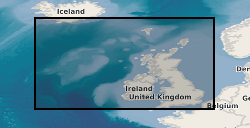
The data shows the location of seabed and sub-seabed samples collected from the UK continental shelf, held by BGS. A BGS Sample Station is a general location at which sampling with one or more equipment types, such as borehole, grab, dredge, has been used. Historically, all deployment of equipment was recorded with the same coordinates so the data shown here will often show several sets of data at the same location. Newer data will begin to show distinct locations based on an equipment type. This layer shows all the BGS Sample Station Locations, including those where the Sampling was unsuccessful. The layers below are divided into distinct equipment types, plus a separate layer for unsuccessful sampling. BGS Sample Station Locations can have a wide range of potential information available. This can vary from a basic description derived from a simple piece of paper up to a complex set of information with a number of datasets. These datasets can include particle size analysis, geotechnical parameters, detailed marine geology, geochemical analysis and others. Prices are available on further enquiry.
-

As an integral part of the investigations carried out at Sellafield, and to a lesser extent for the Dounreay boreholes, the cores from the boreholes were systematically examined by geologists and samples selected for detailed petrographic analysis. Thin sections were prepared from many of these samples. Some of the samples were then prepared for analysis using X-ray fluorescence, X-ray diffraction or scanning electron microscopy. Samples containing fluid inclusions were prepared as doubly polished fluid inclusion wafers. Thin sections were prepared from soil materials obtained from the investigations of the Quaternary deposits. Particular attention was given to samples of the mineralisation that was identified in the formations at Sellafield. In addition to the samples from the boreholes, there are also some samples obtained from surface exposures that were examined during the regional surveys. The samples and sections have been catalogued and incorporated into the national collection by the British Geological Survey. The ownership of NIREX (Nuclear Industry Radioactive Waste Executive) was transferred from the nuclear industry to the UK Government departments DEFRA and DTI in April 2005, and then to the UK's Nuclear Decommissioning Authority (NDA) in November 2006.
 NERC Data Catalogue Service
NERC Data Catalogue Service